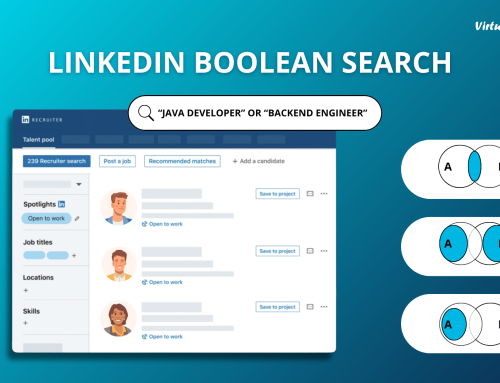From finance and accounting to IT and customer service, offshore partnerships empower firms to scale efficiently, tap into global expertise, and operate around the clock. While offshoring unlocks speed, communication is one of the key challenges. When teams are spread across continents, bridging the communication gap in an offshore environment becomes important.
Poor communication doesn’t just delay work, but it can quietly derail projects, lower morale, and damage team relationships. So, how do successful firms bridge this communication gap?
Let’s explore proven strategies to align offshore and in-house teams and enhance collaboration.
Bridging The Communication Gap Is the Key for Successful Offshore Teams
Imagine this scenario: your in-house team in London submits a task at 5 PM. Your offshore team in India picks it up overnight, but it doesn’t include a proper explanation and unclear instructions. By the time it gets flagged, 24 hours have passed. Multiply this across projects, and suddenly, your most efficient setup is facing a bottleneck situation.
The issue isn’t skill or intent. It’s communication.
Whether it’s delayed feedback, mismatched expectations, unclear ownership, or cultural misalignment, poor communication can cost you:
- Time and productivity
- Team frustration and burnout
- Poor-quality deliverables
- Missed deadlines and dissatisfied clients
How can you prevent that?
1. Use Unified Communication Tools
One of the biggest pitfalls in an Offshore setup is scattered conversations — emails here, messages there, calls elsewhere. The first step to bridging the gap is centralizing the communication channel.
Recommended Tools:
- Microsoft Teams for real-time collaboration
- Asana for task tracking and project transparency
- Zoom / Google Meet for structured video check-ins
Pro Tip: Create dedicated project channels, tag stakeholders for visibility, and keep updates documented.
2. Schedule Sync-Ups Smartly
In an ideal world, teams could collaborate in real time. But 8–10-hour time zone differences make the situation a bit tricky.
That’s why scheduling overlapping sync-ups is a game-changer. Plan weekly or bi-weekly check-ins during shared working hours. Set a consistent time slot for updates, blockers, and roadmap discussions.
Use agendas and shared meeting notes to make every interaction count. This keeps both sides aligned and eliminates the “ping-pong” of updates across time zones.
3. Document Everything
Verbal updates disappear. Written processes scale.
Offshore environments thrive on documentation. It’s not about bureaucracy — it’s about clarity, especially when you are not in the same room.
Use:
- Shared SOPs and onboarding manuals
- Project briefs and task templates
- Change logs and decision records
Think of documentation as your team’s second brain — one that never sleeps.
4. Bridge Cultural Gaps with Training & Empathy
What may seem like a normal response to one team could feel abrupt or unclear to another. Cultural communication styles, tone, formality, and feedback styles can cause unintentional friction.
Here’s how to handle it:
- Provide cross-cultural training to both in-house and offshore teams.
- Encourage open communication, create space for asking questions, and clarify intent.
- Avoid sarcasm, slang, and regional jargon in work chats.
- Celebrate each other’s festivals and milestones to build personal connections.
5. Establish Clear Points of Contact
When multiple people are involved without clarity on roles, confusion multiplies. Ensure each project has:
- A primary point of contact on both sides
- Clearly defined roles and ownership
- Escalation paths for urgent issues
This improves accountability and ensures smoother workflows.
6. Set Communication Cadence and Expectations Early
Start every offshore engagement with a clear communication plan:
- Preferred tools and platforms
- Response time expectations (e.g., replies within 24 hours)
- Reporting formats and frequency (daily standups, weekly reports, monthly reviews)
- Emergency protocols
It’s not about micromanagement; it’s about eliminating ambiguity.
Don’t Just Communicate — Collaborate
There’s a difference between passing updates and truly collaborating. Encourage offshore teams to:
- Join brainstorming sessions
- Offer feedback on processes
- Present their work directly in review calls
This fosters ownership and builds a sense of partnership, not hierarchy.
Turning Communication Gaps into Collaboration Wins
At Virtual Clone, we work with international clients who trust our offshore model not just for skill, but for synergy. We don’t just plug in people — we embed processes, tools, and touchpoints that make communication seamless.
Here’s what we help firms achieve:
- Faster onboarding and smoother integration
- Transparent workflows with built-in visibility
- Culture-aware team training to minimize miscommunication
- Scalable communication frameworks that support long-term partnerships
Because when communication flows well, everything else follows — better quality, happier teams, and faster delivery.
Great Offshore Success Is 80% Communication And 20% Execution.
When you are bridging the communication gaps with the right systems, empathy, and expectations in place, your offshore teams don’t feel distant — they feel like an extension of your core team.
- Unify your communication
- Respect time zones
- Document everything
- Mind the cultural bridge
- Clarify roles and cadence
So, are you ready to optimise the communication gap and collaboration in your offshore setup?
Discuss with Offshore Experts at Virtual Clone.






